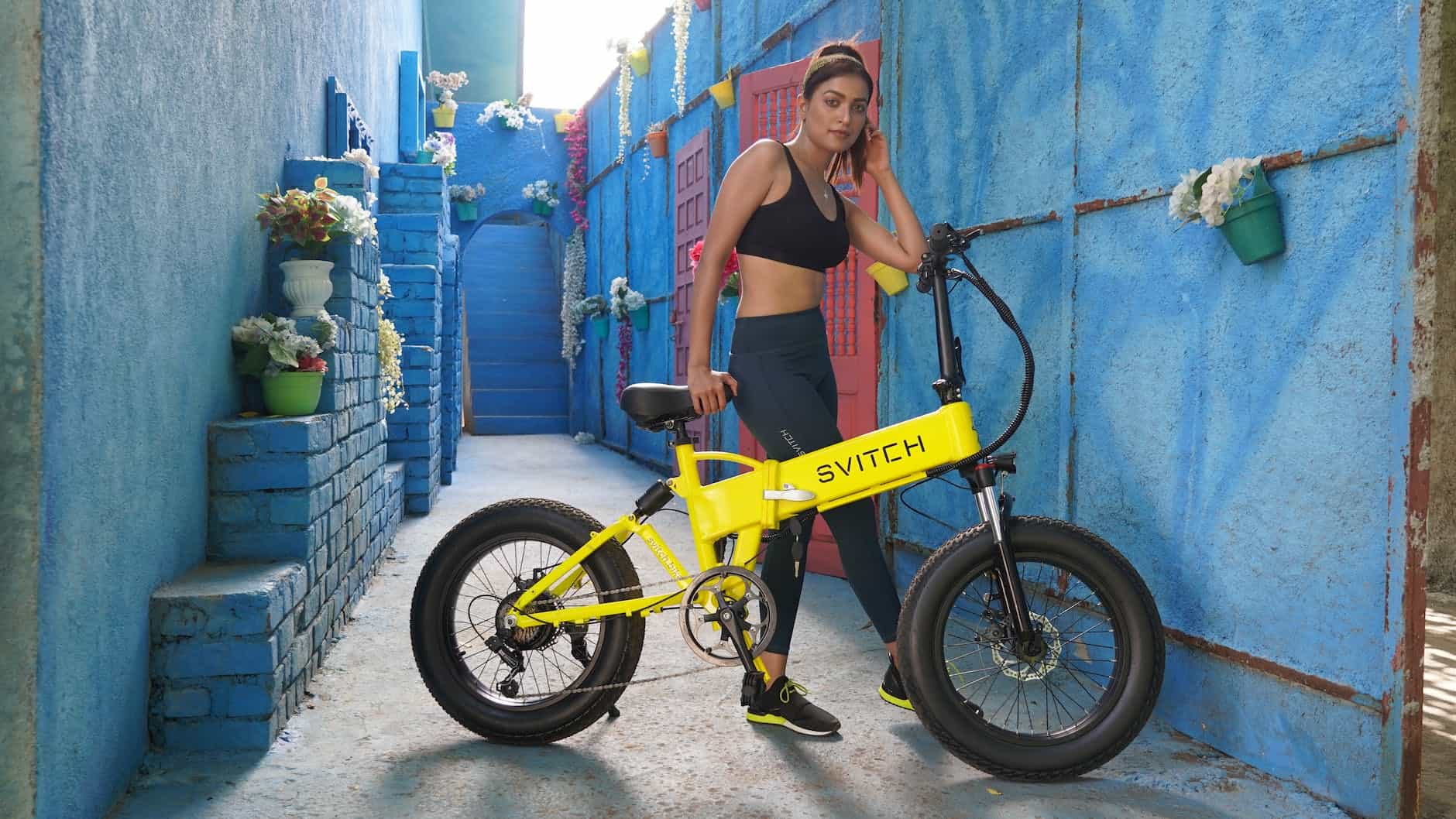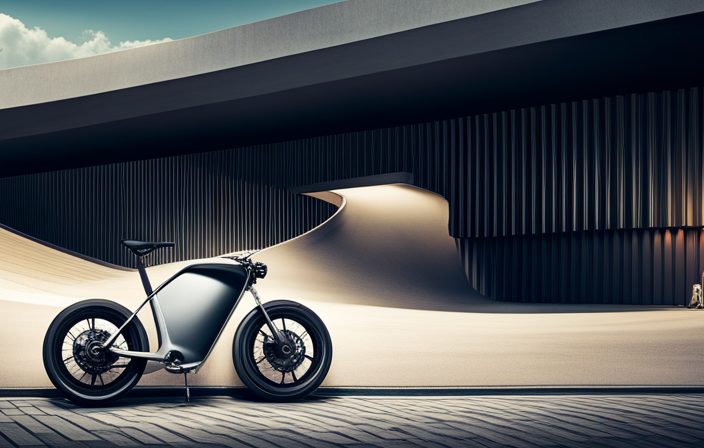Hello, electric bike fan! In search of the ideal bike that allows you to travel from one location to another without any effort? An electric bike is precisely what you’re looking for.
Choosing an e-bike can feel overwhelming; with so many options and features out there, how do you know which one’s right for you?
Well, I’m here to help! As an experienced e-bike rider, I have all the tips and tricks that will make sure your next purchase is the ideal machine for your needs.
So let’s dive in and find the best electric bike for YOU!
Understanding Electric Bike Components
Riding an electric bike is like nothing else. There’s the wind in your face, the sun on your shoulders and a steady surge of power from beneath you as you speed through town or off-road trails. It’s both exhilarating and freeing.
But before you embark on that journey, it’s important to understand what components make up an electric bike so you can be sure you’re selecting one best suited for your needs.
At its core, all electric bikes have two main parts: a battery and motor. The battery provides energy to power the motor which then propels you forward with varying levels of power output depending on how much juice is left in the battery life. Depending on where you live, some models may even come equipped with pedal assist technology — allowing riders to choose between self-powered pedaling or just letting the motor do all the work while they coast along at full speed!
The range of features available when choosing an electric bike are virtually endless these days, but having a basic understanding of the major components will help guide your decision making process when assessing your riding style and needs.
Assessing Your Riding Style
Now that we understand the components of an electric bike, it’s time to assess your riding style. This includes considering factors like commuting styles, weather conditions and terrain type. All of these variables will determine what kind of electric bike is right for you.
When assessing your riding style, here are a few things to consider:
- Commuting Styles – Are you looking for a daily commuter or something more rugged? Do you need the capability to haul cargo? Or do you want something nimble enough to tackle tight city streets?
- Weather Conditions – How much rain and snow do you expect in your area during the year? Does it get cold enough to warrant winter tires? Is there mud on the roads where you live?
- Terrain Type – Will you be dealing with steep hills or winding mountain paths? Do you need extra power for climbing those hills quickly and efficiently?
Your needs should inform the decision-making process when choosing an electric bike. Knowing exactly how you plan on using it can help narrow down which features make sense for your budget. From there, finding the perfect fit for your lifestyle becomes easier than ever!
Knowing Your Needs And Budget
Choosing an electric bike can be a daunting task, but with the right knowledge and some budgeting tips, you can make a cost-effective decision.
Before diving into researching different models, it’s important to take stock of your needs and analyze your budget realistically.
Think about what type of riding you are going to do most often on your new e-bike – will it be primarily commuting or taking leisurely rides?
Electric bikes come in various sizes and weight classes based on their intended use cases, so consider factors like battery range, motor power output and ease of maintenance when assessing which is best for you.
Additionally, look at components such as suspension systems that could influence the overall ride quality depending on where you plan to go frequently.
Now it’s time to crunch those numbers and compare prices between models within your desired specs.
Your ideal setup should fit within your budget while also meeting all of the performance requirements you have set out.
Don’t forget to factor things like insurance costs, warranties and potential repair fees down the line when making this analysis!
With these considerations in mind, you’ll be able to find the perfect electric bike that suits both your lifestyle and wallet size.
Researching Different Models
Now that you know what your needs and budget are, it’s time to start researching different models.
With so many options on the market today, exploring features and comparing brands can be overwhelming.
Experienced electric bike riders advise starting with a few basic criteria such as type of battery, materials used in frame construction, drive system components, range per charge, weight capacity, and other core features like integrated lighting or suspension systems.
When it comes to choosing between throttle-based or pedal-assist bikes, consider your purpose for riding an electric bike—are you looking for a leisurely ride to enjoy nature or do you need extra power when tackling tough terrain?
If you plan on using the bike for recreational activities such as sightseeing or errands around town then the throttle-based model may be best suited for you.
However, if you want more control over how much assistance the motor provides during uphill climbs then go with one of the many pedal-assisted models available.
To narrow down your choices even further look at reviews from independent sources such as magazines, biking forums and websites dedicated specifically to eBikes.
Read up on customer feedback to get an idea of how reliable each brand is and which ones offer good after sales services in case something goes wrong with your purchase.
This will help make sure that no matter what kind of electric bike you decide on it will serve its intended purpose well.
Deciding Between Throttle And Pedal-Assist
Throttle Pros: They’re great for getting up to speed quickly and taking the strain off your legs.
Throttle Cons: You’ll need to be aware of your speed, as it’s easy to unintentionally exceed the legal limits.
Pedal-Assist Pros: The motor kicks in automatically when you start to pedal, so you can get a good workout while still making it to your destination.
Pedal-Assist Cons: You’ll have to be careful to not over-rely on the motor, as it can drain the battery quickly.
Throttle Pros
Choosing between throttle and pedal-assist electric bikes can be really tricky. You want something that’s reliable, safe, and fits your budget – not to mention looks good too!
Well have no fear: Throttle Pros are here! They come with a variety of features like remote control options for added safety, an array of colors and styles to choose from, plus the convenience of being able to adjust speed settings on the fly. Plus they’re easy to use… just twist the handlebar grip and cruise away!
Plus you don’t even need a license or registration required in most places. That makes them great for those who want to jump right into owning an E-Bike without any hassles.
With all these amazing benefits, it’s no wonder why more people are opting for Throttle Pros when deciding between throttle and pedal-assist electric bikes.
It comes down to personal preference at the end of the day – but if you’re looking for ease-of-use, affordability, style, and peace of mind then look no further than Throttle Pros – the perfect electric bike companion!
Throttle Cons
While Throttle Pros offer a great variety of features, one must consider the potential safety concerns and environmental impact when making their decision.
There have been reports of throttle-related accidents due to riders being inexperienced or not paying attention to the road.
Additionally, electric bikes run on batteries which can be harmful to the environment if they are disposed of improperly.
That’s why it is important for those who choose throttle over pedal assist to practice safe riding habits and make sure that their vehicle is properly maintained.
It’s also essential to think about how you will dispose of your battery responsibly once its life runs out.
With these steps in mind, you can rest assured that your ride won’t cause any harm – whether it’s yourself or the planet!
At the end of the day though, both types of electric bike come with pros and cons and only you know what best fits your lifestyle.
If you’re looking for an easy-to-use option but don’t want to compromise on safety then perhaps a Throttle Pro is right for you!
Consider Battery Capacity And Range
When it comes to choosing an electric bike, battery capacity and range are two key features that should not be overlooked. As you evaluate costs and analyze the different features of each model, make sure that you look at the watt-hours (Wh) rating and estimated range.
The higher the Wh rating, the more powerful the battery will be, and ultimately this affects how far you can ride on a single charge. It’s important to note that batteries with a high power rating tend to cost more than those with lower ratings.
You also want to take into account your own needs when evaluating battery capacity and range for an electric bike. If you plan on taking longer rides or commuting long distances every day, then you’ll need an ebike with a larger battery capacity and greater range. On the other hand, if your rides are short or infrequent, then you may be able to get away with an ebike with a smaller battery size.
It is essential to consider both battery capacity and range when selecting an electric bike since these factors have significant implications for your riding experience. Taking time to research different models will help ensure that you choose one that meets your particular needs in terms of performance as well as budget constraints.
With this information in mind, it’s time to move onto evaluating motor power and efficiency.
Evaluating Motor Power And Efficiency
Now that you’ve considered battery capacity and range, let’s move on to another important factor: motor power and efficiency.
When it comes to electric bikes, the motor is a critical component of optimizing your ride experience. Power ratings are an important indicator of how much torque the bike will generate with each pedal stroke. Higher power ratings typically mean more oomph when you step on the pedals, so if you want plenty of zip while riding, look for higher wattage motors.
In addition to power ratings, also consider other efficiency metrics such as amps or volts. These numbers tell you how efficiently energy from the battery is transmitted directly into propulsion force. Generally speaking, higher amp and volt ratings suggest better performance capabilities than low-rated models. This could make all the difference in terms of hill climbing ability or speed—making those long rides far easier!
So keep both power ratings and efficiency metrics in mind when selecting an electric bike. Taking into account frame material can also help ensure that you get exactly what fits your needs best—so don’t forget about this factor either!
Taking Into Account Frame Material
When it comes to choosing an electric bike, the frame material is a key consideration. Electric bikes are usually made of aluminum or steel and both have their pros and cons.
Aluminum – Lightweight yet strong, this material offers good performance on roads with its superior welding techniques used in production. It also provides excellent frame geometry that gives riders better control over their speed and direction.
Steel – Steel has been around for decades and continues to provide reliable strength for e-bikes. Its heavier weight helps absorb shocks from rough terrain but can make riding more difficult if you’re travelling long distances. However, with proper care, your steel e-bike will last much longer than other materials.
No matter which type of frame material you choose, it’s important to test out different suspension options before making your purchase. Different types of suspension systems can affect the kind of ride experience you get from your electric bike so take some time to research them thoroughly before committing.
Testing Out Different Suspension Options
The frame material of your electric bike is an important factor to consider, but it’s far from the only one. Testing out different suspension options can also have a major impact on how well your e-bike rides and handles. Whether you’re commuting or going off-road, having a high quality suspension is essential for getting the most out of your ride.
So what are some popular types of suspension? Well, there are essentially two main contenders: traditional coil spring forks and air forks. Let’s take a quick look at how they differ in terms of shock absorption:
| Type | Shock Absorption | Weight | Durability | Cost |
|---|---|---|---|---|
| Coil Spring Fork | Good for small bumps, less effective with large impacts | Heavyweights compared to other suspension systems | Usually reliable over time | Generally more affordable |
| Air Fork | More efficient overall due to adjustable pressure settings | Lightweight design makes them suitable for lightweight bikes | Can be prone to punctures if not maintained properly | Generally more expensive than coil spring forks |
As you can see, both offer great shock absorption capabilities depending on the type of terrain you’ll be riding on. Coil springs may be heavier and less expensive, while air forks offer greater adjustability and lighter weight but come at higher cost. Ultimately, it depends on your budget and preferences which system is right for you. No matter what though, testing out different versions will give you a better understanding of their pros and cons so that you can make an informed decision when choosing between wheel sizes.
Choosing Between Wheel Sizes
When it comes to choosing an electric bike, one of the most important considerations is wheel size. In general, there are two main sizes – 24” and 27.5”.
One key factor in this decision is your riding style. If you’re looking for a more traditional ebike experience, then the smaller wheels will be ideal as they make turning easier and provide a smoother ride on flat terrain. On the other hand, if you’re interested in off-road biking or want faster speeds, then larger wheels may be better suited to your needs due to their increased stability at higher speeds and improved traction over rough terrain.
The second thing to consider when selecting between wheel sizes is aesthetics. Generally speaking, bikes with larger wheels tend to have a sleek modern look whereas those with smaller wheels tend to have more classic styling. Ultimately its up to you which aesthetic appeals more – both types of ebikes can offer great performance but just have different looks depending on what kind of image you’d like for yourself when cruising around town!
No matter what type of ebike styles you decide upon, understanding how wheel sizes impact performance and visuals should help guide your choice towards finding the perfect fit for your needs and preferences. Knowing all these details beforehand can save time later when trying out various models so that you know exactly what fits best before ever leaving home!
Examining Brake Systems
When it comes to electric bikes, the brake system is a critical factor in choosing the right one. There are several different types of brakes that can be used on an e-bike, each with their own advantages and drawbacks. It’s important to think about which type of brakes you need for your particular situation before making a purchase.
The most common type of brakes found on electric bikes are disc brakes, but rim brakes are also popular options. Disc brakes offer more stopping power than rim brakes but require more maintenance due to additional parts needed for installation and servicing needs. Rim brakes are easier to maintain since there aren’t as many components involved, but they don’t provide as much stopping power as disc brakes do.
It’s important to weigh both options when considering which brake system will work best for your e-bike.
Finally, it’s also helpful to look into tire types when selecting an e-bike. Different tires come with varying levels of traction and durability, so it’s essential to determine what kind of terrain and conditions you’ll be riding in before settling on a specific tire style. This can help ensure that your chosen bike has the right amount of grip and stability while out on the road or trails.
Looking Into Tire Types
When it comes to electric bikes, there are two main types of tires: pneumatic and solid. Pneumatic tires provide a more comfortable ride as they absorb shocks from bumps in the road. On the other hand, while solid tires don’t require any maintenance like pumping air or adjusting tire pressure, they do have less cushioning than their pneumatic counterparts.
To ensure your ebike has optimal performance, it’s important to regularly check the tire type and maintain the right amount of tire pressure according to manufacturer recommendations.
If you opt for pneumatic tires, keep an eye out for punctures or low pressure levels that may cause faster wear-and-tear on your bike over time. Additionally, if you experience any trouble with your bike’s traction due to slippery roads or wet conditions, consider switching up to knobby treads which will help increase grip when riding off-road.
No matter what kind of terrain you’ll be tackling with your new electric bike, proper tire selection can make all the difference between a pleasant ride and one that leaves you feeling frustrated and exhausted. With just a bit of research into these different tire options—as well as regular maintenance—you can ensure that your ebike is always ready for whatever journey lies ahead.
Now let’s take a look at weighing different accessories available for ebikes…
Weighing Different Accessories
When it comes to electric bikes, it’s important to consider all the different accessories like battery packs, helmets, lights, mirrors and locks.
Pedal-assist, handlebars, saddles, kickstands, fenders, suspension, cargo racks and even e-bike computers all come into play.
I’d also recommend looking into the different accessories available, since they can make your ride more comfortable and enjoyable.
When weighing all these options, it’s important to consider your own riding style, terrain and budget. Ultimately, you want to make sure you have the right gear to ensure your safety and maximize your riding experience.
Helmets
There’s no doubt about it, when choosing the right electric bike accessories for yourself, safety should always be your number one priority. And that means making sure you have a helmet that meets all safety standards and fits securely on your head.
A properly fitted helmet can make a huge difference in ensuring you stay safe while riding your ebike. Getting the perfect fit is key to keeping yourself protected while out cycling. Make sure you adjust the straps until they are snug and comfortable – not too tight or loose.
It may take some time adjusting different helmets before finding the right one but it’s worth taking the extra effort. Plus, most high-end helmets come with adjustable sizing options which makes getting just the right fit easier than ever!
So don’t skimp on safety – get yourself an approved helmet that has been tested and certified to meet rigorous safety standards as well as providing optimal comfort and fit adjustments. With this piece of gear, you’ll be able to enjoy your rides knowing you’re safeguarded from potential harm!
Lights
When it comes to electric bike accessories, lights are an absolute must-have. Not only do they help you see in the dark, but they also make sure that drivers and pedestrians can see you too!
And when looking for the right lighting system, there are a few key features you should look out for. Night vision technology is essential – having the ability to project light further than usual will definitely give you an edge while cycling in low-light conditions. Battery life is another important factor; if your battery dies mid ride, then it won’t be of much use to you. So make sure you get one with long lasting power so that you don’t have to worry about recharging every time before heading out on your ebike. Finally, consider how visible the lights will be from different angles – this way everyone else on the road can spot you easily even when riding at night.
Weighing Different Accessories
The previous section discussed the various tire types that can be used on electric bikes. Now it’s time to weigh the different accessories available when purchasing an electric bike.
These accessory features may include, but are not limited to, baskets, carriers, and side panels. It is important to consider size comparison between all of these options as you make your purchase decision.
Electric bikes come in a variety of sizes, so finding the right fit for you can often be challenging. Consider how each feature fits into your lifestyle and what kind of terrain will you mostly use your electric bike on?
Baskets and carriers should provide enough space for any items or packages you might need while out riding. Side panels may also help protect against unexpected weather conditions or other environmental factors.
Once you have determined which features best suit your needs, it’s time to examine user reviews and ratings before making your final choice. Reviews can provide valuable insight into the performance capabilities of any given product and give you a better understanding of what others think about its overall quality and reliability.
Knowing why people like or dislike certain models can be helpful in deciding which electric bike is best for you!
Determining User Reviews And Ratings
When it comes to choosing an electric bike, one of the most important steps you should take is researching user reviews and ratings. This will give you a good idea of what people are saying about certain models.
First off, read through reviews from other customers who have purchased the same model that you’re considering. Make sure to weigh both pros and cons so you can make an informed decision.
Next, compare features between different models. Doing this lets you determine which ones offer more value than others depending on your needs. Here’s a few items to consider when comparing:
1) Range – How far can the bike go on one charge?
2) Speed – What type of speed capabilities do they have?
3) Weight Capacity – Is the weight capacity suitable for your size?
After taking all these factors into consideration, it’s time to consult with an expert for advice. A knowledgeable professional can help guide you in making the right choice based on your individual preferences and budget. Having someone experienced in electric bikes by your side makes the selection process much easier!
Consulting An Expert For Advice
When choosing an electric bike, consulting an expert is a great way to find the right option for you. An expert can help you access resources and provide advice on which type of e-bike will best suit your needs. They can also point out any potential issues or concerns that might come up in the future so you are prepared.
Researching reviews online is another important step when selecting an electric bike. Reviews from other riders who have purchased and tried out similar models will give you insight into what features they liked and disliked about their purchase. This can be extremely helpful when it comes time to make a decision as you’ll know exactly what kind of experience people have had with certain bikes before buying them yourself.
It’s important to ask questions during this process too! Don’t be afraid to reach out to experts or dealerships if there’s something specific that you’re not sure about or want more information on. With all the available resources at your fingertips, getting accurate answers should be easy – just remember to research thoroughly first so that you don’t waste anyone’s time asking basic questions.
Taking these steps will ensure that you choose the perfect electric bike for your individual needs and lifestyle!
Frequently Asked Questions
How Long Do Electric Bike Batteries Typically Last?
Choosing the right electric bike battery can feel like a daunting task, but it doesn’t have to be. An electric bike expert knows that battery life span is an important factor when considering your options.
Battery charging time and capacity are also essential components of picking the perfect e-bike battery.
Generally speaking, most batteries will last between 500 and 1000 charge cycles (depending on usage).
A full recharge usually takes 4-6 hours and some lithium ion batteries may even have a lifespan as long as 5 years!
So don’t worry – with the right research you’ll find the ideal battery for your needs in no time.
Are Electric Bikes More Expensive Than Regular Bikes?
When it comes to cost, electric bikes can be more expensive than regular bikes. However, when you consider the environmental impact of electric bikes and their ability to help reduce emissions, they offer a lot of value for the money.
Electric bike batteries typically last around 500-1000 charge cycles before needing replacement which helps make up for the initial investment.
It really depends on your budget and how much you’re willing to invest in an eco-friendly ride that will save you money over time while helping protect the environment!
What Safety Measures Should Be Taken When Riding An Electric Bike?
When it comes to electric bike safety, wearing a helmet is an absolute must. Not only are helmets designed to protect your head in the event of an accident, but they also serve as a visible sign that you’re riding an electric bike and should be given extra space on the road.
Additionally, make sure you have bright LED lights for night rides and reflective clothing so drivers can see you from all angles.
As an added bonus, if you outfit yourself with the necessary safety gear and take regular maintenance care of your electric bike, then you’ll experience enhanced peace-of-mind while cruising around town!
Are There Any Age Restrictions For Electric Bike Riders?
When it comes to electric bike riders, there are no hard and fast age restrictions.
Generally speaking, anyone over the age of 16 with a valid driver’s license can ride an e-bike; however, this may vary depending on your local laws or regulations.
Commuting benefits such as convenience, cost savings, fitness level improvements and speed limits make electric bikes appealing for both younger and older riders alike.
For those under 16 who wish to use an electric bike, I recommend consulting your local authorities about applicable rules and regulations first.
Are Electric Bikes Good For Long-Distance Rides?
Are electric bikes good for long-distance rides? Absolutely! With the right power output and motor type, you can go further than ever before.
In fact, many riders have taken their electric bike on multi-day trips with no problems at all. The powerful motors make it easy to climb hills and traverse terrain that would be difficult or impossible on a regular bike.
Not only this, but they also provide assistance when needed so you don’t get too tired from pedaling over longer distances. Whether you’re looking for an epic adventure or just want to see more of your local area, an electric bike could give you the freedom to explore like never before!
Conclusion
Riding an electric bike can be a great way to get around and have fun. With the right knowledge, you can make sure that your experience is safe and enjoyable.
According to research conducted by the National Highway Traffic Safety Administration, electric bikes are three times less likely than regular bicycles to cause injury in riders aged 16-20.
Overall, electric bikes offer a lot of advantages over traditional bicycles – they’re easier to ride, require less effort for long distances, and provide more safety features.
With careful consideration of battery life, cost-effectiveness, safety measures, age restrictions and ability for long rides, you’ll be able to find the perfect electric bicycle that suits your needs.
















